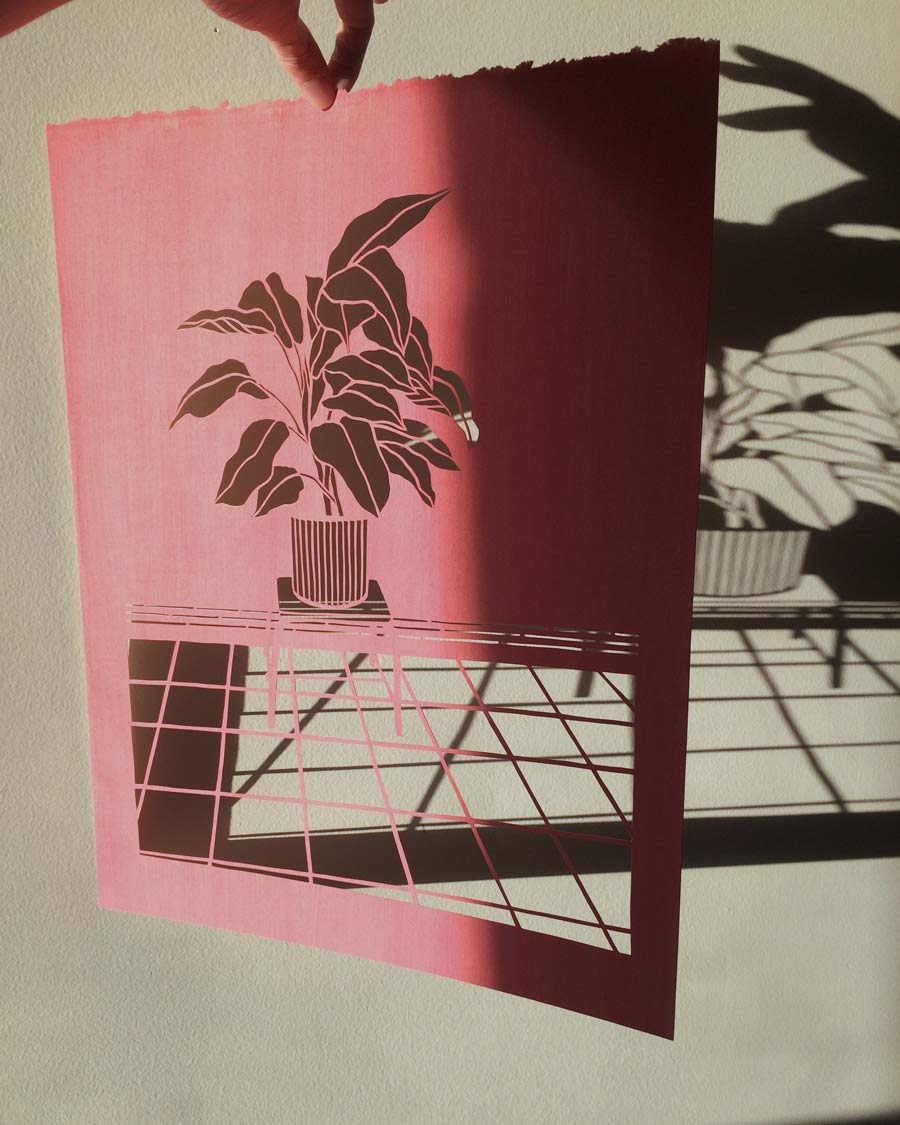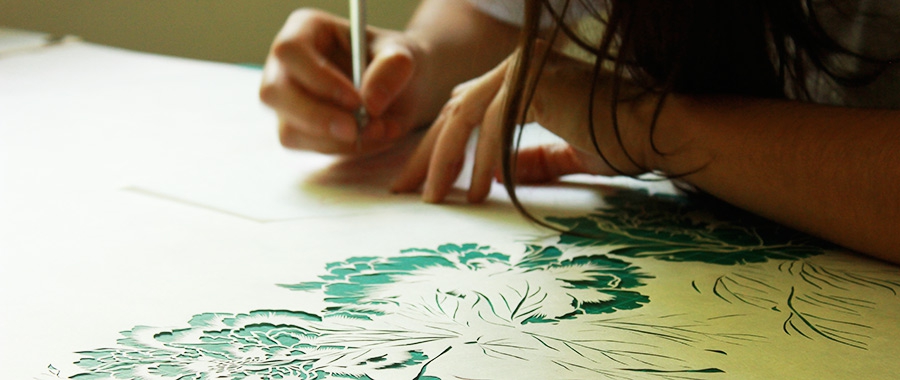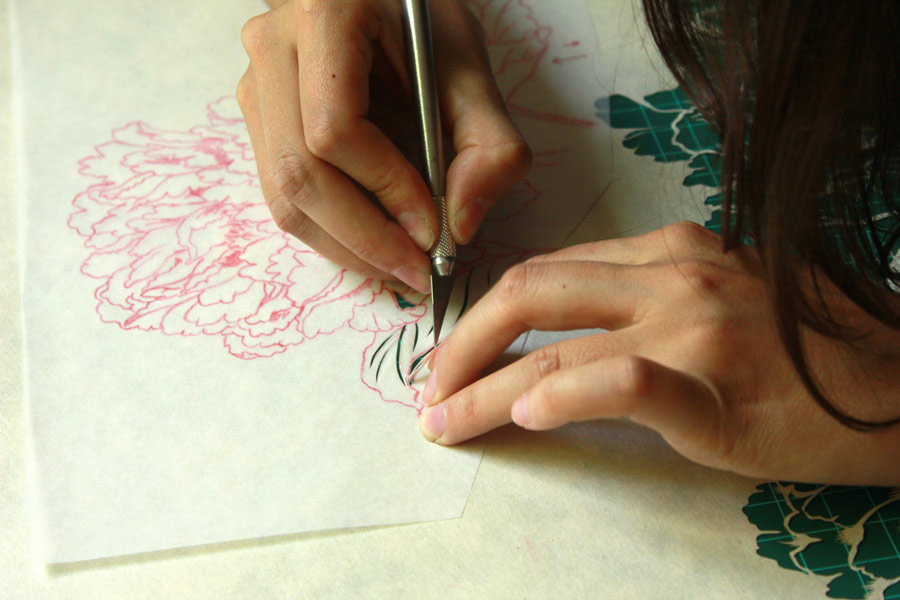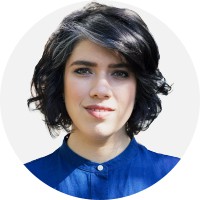The views expressed in our content reflect individual perspectives and do not represent the authoritative views of the Baha'i Faith.
Josefina Hernandez—Colombian born, Canadian raised and now a New York City resident—practices the ancient art form of paper cutting.
Josefina learned paper cutting while studying Visual Studies and Art History at the University of Toronto. Exploring light, space and composition by capturing quiet moments of beauty, Josefina’s fresh approach to paper cutting has brought this traditional art form to the contemporary world.
Describing her final work just as important as the creative process, Josefina tells BahaiTeachings.org how the teachings of the Baha’i Faith inform her work, and exalts her work to the rank of worship.
In part one of this two-part interview, Josefina opens up about her artistic and spiritual journey, the steps in her creative process and the inspiration behind her unique approach to paper cutting.
Q: Could you share where your creative journey began and how it lead you to current medium of paper cutting?
 A: I grew up in a very creative home, and I have been drawing and painting for as long as I can remember. My parents were creative people and were very supportive and encouraging of artistic expression. When the time came to choose a career path, it was clear in my mind that there was nothing else I wanted to do other than art. I studied Visual Studies and Art History at the University of Toronto. During my last year, I took a class that explored paper as a surface and as a material. Working on one of the assignments, I came across traditional Chinese and Japanese paper cutting and was enthralled by the art form. I immediately started experimenting with a piece of paper and an X-acto knife. I’ve been in love with the medium ever since.
A: I grew up in a very creative home, and I have been drawing and painting for as long as I can remember. My parents were creative people and were very supportive and encouraging of artistic expression. When the time came to choose a career path, it was clear in my mind that there was nothing else I wanted to do other than art. I studied Visual Studies and Art History at the University of Toronto. During my last year, I took a class that explored paper as a surface and as a material. Working on one of the assignments, I came across traditional Chinese and Japanese paper cutting and was enthralled by the art form. I immediately started experimenting with a piece of paper and an X-acto knife. I’ve been in love with the medium ever since.
Q: Paper cutting is quite a traditional art form, but when I look at your work, it feels so contemporary. What do you feel is unique about your approach to paper cutting?
A: My approach to paper cutting comes from drawing things that intrigue me. Both in my abstract and representational art, I am very much inspired by nature and its sinuous forms. I am also curious about the ways we are connected to our environment and how our spiritual and material realities relate to the spaces we inhabit.
Q: Your work is quite unique in that you’re able to capture, light, shapes and space really beautifully through paper cutting. Where do you get your images and inspirations from and why do you choose to use them in your work?
A: All of my works start with a photograph. I am constantly taking pictures of details that catch my eye. I am particularly interested in capturing quiet moments of beauty. Something that might go by unnoticed as we rush about our days, like a shadow on a wall, or flower peeping through a fence.
Q: What happens when you make a mistake? Do you try to fix it, do you try to work it into the piece or do you generally have to start from scratch?
A: Before I start any piece I meticulously plan the composition, delineating what will be cut out and what will remain. This way, I free myself to make decisions about particular line treatments or cuts within the guidelines and prevent myself from making a mistake. However, if there is an instance where I cut a bit too much, or the knife slips too far, I find a way to work around it by modifying the composition slightly. I find that with any type of art there is an element of chance and part of getting a piece to its final stage is learning to work around obstacles that arise. That is what ultimately sharpens our abilities and allows us to reach greater heights.
Q: Your creative process is very meditative to watch, does it feel as meditative in practice?
A: Yes! It is very meditative. The process of cutting is as important as the final product for me. This is where I get to put into practice this quote by Abdu’l-Baha about the arts:
I rejoice to hear that thou takest pains with thine art, for in this wonderful new age, art is worship. The more thou strivest to perfect it, the closer wilt thou come to God. What bestowal could be greater than this, that one’s art should be even as the act of worshipping the Lord? That is to say, when thy fingers grasp the paintbrush, it is as if thou wert at prayer in the Temple. – Abdu’l-Baha, from a tablet to an individual Baha’i.
Q: How and when did you become a Baha’i? What first attracted you to the Baha’i Faith?
A: I became a Baha’i when I was 19. I first heard about the Baha’i Faith from my sister Laura, who had recently become a Baha’i herself. Over the years I grew curious about the faith and years later, I attended a holy day celebration for the martyrdom of the Bab, the prophet-herald of the Baha’i faith who foretold the coming of Baha’u’llah. I was moved when I heard the story of this manifestation of God and how we as humanity had once again put to death a sanctified being sent to us by God to guide us. The Bab’s last words before he was executed with one of his disciples touched me, and tears filled my eyes to hear them:
“O wayward generation!” Were the last words of the Bab to the gazing multitude, as the regiment prepared to fire its volley, “Had you believed in Me every one of you would have followed the example of this youth, who stood in rank above most of you, and would have willingly sacrificed himself in My path. The day will come when you will have recognized Me; that day I shall have ceased to be with you.” – Quoted by Shoghi Effendi in God Passes By, p. 53.
I officially became a Baha’i the following April but in my heart, that was the moment I saw the truth of the Baha’i Faith and was moved to learn more. I had always believed in one God, and that all religions come from this one God. In the Baha’i Faith I found a religion that not only upheld this truth, but further explained it as progressive revelation; where each messenger of God—Moses, Jesus, Buddha, Muhammad, the Bab, Baha’u’llah—has come with a message and teachings for each stage of humanity.

















Comments
Sign in or create an account
Continue with Googleor